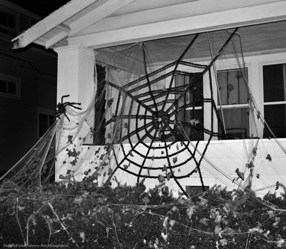
As winter sets in, chances of a rodent sighting in your home will rise as rodents attempt to find their way indoors to escape the cold. Being that mice can be destructive and can also spread disease, it’s important to learn identification facts to safeguard your home.
Droppings– Droppings are one of the most obvious sign of a mouse infestation. Dropping pellets tend to be tiny (about ¼ inch), black, and numerous. You may find waste matter around nesting sites, in food storage areas, on shelving, floors or counters. If you’re looking for additional waste clues, mouse urine will show up under ultraviolet light.
Route Rub Marks– Mice tend to use the same routes and travel against walls when navigating, this leaves dirty grease smudges on walls, floors and baseboards (from their oily fur). You may also notice urine spots on those same routes.
Scent and Sounds-Open a cupboard and get a whiff of a distinctive smell? A strong ammonia odor (the scent of urine) may be obvious, especially in enclosed areas.
Noticing any scratching sounds? You may hear scurrying noises in walls and ceilings, especially at night when mice are most active.
Did You Know: Mice can enter your home through a hole the size of a dime!
Gnawing Damage-Mice have teeth that continuously grow and so they like to gnaw to keep their teeth shorter. Gnaw marks and holes can be found on plastic and wood and most dangerously, on electrical wires which can be a fire hazard.
Food storage sites can also be areas in which to see gnaw marks. Mice will chew up boxes and contaminate stored food items.
Noticeable Nests– House mice shred paper and other soft materials, such as cotton, wall material and insulation for nesting sites. Good hiding places for nests include: cabinets, in dishwashers, behind refrigerators, ceilings, wall voids and other dark storage areas. Usually young mice will be present within the nesting site.
Eek! I’ve seen a mouse!-Lastly, you may spot live or dead mice around your home. Typically, if you see one, there’s most likely more.
Did You Know: a female house mouse can give birth to a half dozen babies every three weeks and can produce up to 35 young per year.
There are ways you can prevent an infestation in your home by:
- Eliminating moisture sites within the home and keeping basements, attics and crawl spaces ventilated and dry
- Replacing weather stripping around windows and repairing damaged screens
- Sealing cracks and any open holes on the exterior of your home with caulk and or steel wool
- Installing door sweeps on exterior doors
- Storing firewood at least 20 feet from your home
- Storing food items in sealed containers and disposing of garbage regularly
If you’re in need of professional assistance with a pest issue, Give us a call at our Muskego office at 262-679-4422, our Oshkosh office at 920-385-0412 or toll free at 800-956-0800.
Our blog has a new home, follow future blogs at: Safeway Blog

 In a season that celebrates things that make you “Eww”, rats fit in just perfectly in an October, Halloween month.
In a season that celebrates things that make you “Eww”, rats fit in just perfectly in an October, Halloween month.



